 February 23, 2017 John E. Ross, KD8IDJ, Editor
| ||||||||||
Orlando HamCation a Hit, Posts New Attendance Record When Orlando HamCation® hosted the ARRL Southeastern Division Convention on February 10-12, it posted a new attendance record. As a result of its growing popularity, the Orlando show may now be the third largest ham radio gathering in the world -- behind the JARL Tokyo Ham Fair, with an estimated 37,000 attendees in 2016, and This year, HamCation's sponsor, the ARRL-affiliated Orlando Amateur Radio Club (OARC), announced the retirement of HamCation Chairman Peter Meijers, AI4KM, who has headed up the show for 10 years. Michael Cauley, W4MCA, will succeed him. Cauley has served for 7 years as HamCation's Tailgate Chairman, for 6 years as the IT Chairman, and for 1 year as Finance Chairman. OARC President John Knott, N4JTK, said Meijers had wanted to retire after last year's show, but he convinced Meijers to stay on for another year. "I'm extremely sad to see Peter retire, but totally understand that after 9 shows he felt it was time for a little rest!" Knott said, adding that planning for HamCation 2018 "starts now!"
Representing ARRL Headquarters at HamCation 2017 were CEO Tom Gallagher, NY2RF; ARRL Marketing Manager Bob Inderbitzen, NQ1R, and ARRL Contest Branch Manager Bart Jahnke, W9JJ. They were joined by ARRL Southeastern Director Greg Sarratt, W4OZK; Vice Director Joey Tiritilli, N4ZUW; Northern Florida Section Manager Steve Szabo, WB4OMM; ARRL Honorary Vice President Frank Butler, W4RH, and a handful of other ARRL Field Organization volunteers.
Szabo and Sarratt moderated the standing-room-only ARRL Forum, which Gallagher and Inderbitzen attended, while Jahnke supported an ARRL Contesting Forum. Also attending was ARES E-Letter Editor Rick Palm, K1CE, who described the forum as "all positive" and focused on how to gain the attention and interest of younger people. "[O]ne comment that struck me came from a member of the Lakeland Amateur Radio Club, who said that the club had faced declining attendance at club meetings and membership until they eliminated the business portions of the meetings in favor of more hands-on, show-and-tell demonstrations of equipment, modes and antennas, which turned into big hits," Palm recounted.
The ARRL College Amateur Radio Initiative (CARI) enjoyed attention throughout HamCation. Gallagher, wearing a "Penn" sweatshirt for his University of Pennsylvania alma mater, welcomed attendees to a CARI Forum, moderated by Andy Milluzzi, KK4LWR. Volunteer Don Search, W3AZD, headed up DXCC card checking. Membership sign-ups were brisk, Inderbitzen reported, "and we couldn't have kept up without the additional help of volunteers Lindy Gallagher and Dr. Sherry Mahafza, KM4VSW." Jahnke and Inderbitzen also attended the Florida Contest Group dinner, which included a keynote presentation by elite contester Tim Duffy, K3LR. "I'm extremely grateful for Peter Meijers' long and dedicated service to Orlando HamCation," Inderbitzen said. "He's done an incredible job -- a true and good leader in our Amateur Radio Service." Inderbitzen has posted a photo album on ARRL's Facebook page. Read more. HAARP Goes Classical During New Experimental Campaign The just-concluded run of ionospheric investigations conducted from Alaska's High Frequency Active Auroral Research Program (HAARP) observatory -- quite likely the most powerful HF transmission facility in the world -- revived the latent shortwave listener (SWL) lurking within most radio amateurs. Operating under Part 5 Experimental license WI2XFX, HAARP this month even aired some classical music as it conducted its first scientific research campaign since being taken over 18 months ago from the military by the University of Alaska Fairbanks (UAF) Geophysical Institute.
UAF Space Physics Group Assistant Research Professor Chris Fallen, KL3WX, focused on two experiments -- one called "airglow" that literally aimed to light up the ionosphere, and another to demonstrate the so-called "Luxembourg effect," first noticed on a 1930s Radio Luxembourg broadcast. Public engagement was part of his plan, and Fallen this week said the Twitter and e-mail feedback from his transmissions had been "fantastic," and that his science campaign had become "quite an event."
"Thank you for making a difference and advancing Amateur Radio as well," Doug Howard, VE6CID, tweeted. Another Twitter follower enthused, "You're running the coolest DX station in the world." Fallen said he also received "a lot of great waterfalls," as well as video and audio recordings from hams and SWLs. Fallen started and stopped each experiment block with DTMF tones, transmitted in AM on or about 2.8 and 3.3 MHz, each channel fed with audio tones of different frequencies or, in the case of music, as a separate stereo channel. If the Luxembourg effect is present, skywave-signal listeners would hear both channels combined on a single frequency; Fallen said the effect is easier to detect with tones. In addition to tones, he transmitted "a 'dance track,' a Pachelbel Canon arrangement, and a variation of 'Row, Row, Row Your Boat.'" Jeff Dumps, KL4IU, composed some of the music, and he arranged and performed all of it.
The CW "airglow" artificial aurora experiment followed the Luxembourg effect transmissions. All week, Fallen despaired that the "ratty" ionosphere and cloud cover were diminishing his hopes for success with the artificial aurora experiments. But on the last night, he tweeted, "Seeing artificial airglow with the spectrometer. Film at 11." Fallen is now evaluating the results of his HAARP efforts. He said one listener posted "a most excellent" YouTube clip. He was not specific; several have been posted that document this week's experiments, including this one from Stephen Oleson, VE6SLP. Laurence Howell, KL7L, in Wasilla, Alaska, posted an audio file. "The miracle of crowd sourcing!" Fallen said. "If only the Luxembourg effect was more pronounced, but it is in the 3,300 kHz recording." Fallen has been working under a $60,000 National Science Foundation grant. "During campaigns, significant expenditures for fuel and personnel are required," the grant abstract said. "Large start-up costs make HAARP experiments largely inaccessible to individual researchers unless multiple experiments and funding sources can be bundled together during a campaign of up to 2-week duration." According to the abstract, public participation would maximize "the broader impacts of the investigations." Fallen posted additional information on his "Gakona HAARPoon 2017" blog. The Doctor Will See You Now! "HF Loop Antennas" is the topic of the just-released episode of the "ARRL The Doctor is In" podcast. Listen...and learn!
Every 2 weeks, your host, QST Editor-in-Chief Steve Ford, WB8IMY, and the Doctor himself, Joel Hallas, W1ZR, will discuss a broad range of technical topics. You can also e-mail your questions to doctor@arrl.org, and the Doctor may answer them in a future podcast. Enjoy "ARRL The Doctor is In" on Apple iTunes, or by using your iPhone or iPad podcast app (just search for "ARRL The Doctor is In"). You can also listen online at Blubrry, or at Stitcher (free registration required, or browse the site as a guest) and through the free Stitcher app for iOS, Kindle, or Android devices. If you've never listened to a podcast before, download our beginner's guide. Just ahead on March 2: "CTCSS and DTMF." MARS Refocuses Its Mission, Encrypts Data Nets Today's Military Auxiliary Radio System (MARS) program has changed markedly from what it was just a few years ago. So says US Army MARS Program Manager Paul English, WD8DBY, who contends that MARS must adapt in order to remain relevant and useful to its sponsor, the US Department of Defense (DOD).
While the priority MARS mission is to provide contingency HF communication to support the DOD and the military, MARS also supports communication for combat commands providing humanitarian assistance and disaster relief, provides contingency communication for Defense Support to Civil Authorities (DSCA), and provides "morale and welfare communications" in support of the DOD. MARS still provides support for civil authorities, but it must follow DOD procedures for how that support is provided, English explained. "MARS leadership used to actively encourage our members to support civil authorities," he said, "and that put us in direct competition with the Amateur Radio community as well as with other federal agencies." English said that in today's MARS program, the primary digital protocol is software that emulates Military Standard (MilStd) 188-110A (M110A) serial phase-shift keying, which is compatible with what is used by the military. MARS members may still use Amateur Radio digital modes on working channels, but M110A is the principal mode. There are no plans to transition to digital voice modes. This year, MARS introduced an online encryption program that allows all digital radio traffic to be encrypted as it is being transmitted. MARS has also expanded its use of automatic link establishment (ALE), although members are not required to use it.
"Our bread and butter remains single-channel HF communication," English said. "The majority of our members who do use ALE are using the MARS ALE software program. Some of our members who support our national nets are moving to hardware ALE radios." The MARS program supports quarterly contingency communication exercises supporting the DOD. These are based on "very bad day" scenarios, where traditional forms of communication are no longer available. "Through these exercises, the DOD -- via the MARS community -- reaches out to the Amateur Radio community to provide situational awareness information at the county/local level," English said. That makes sense to MARS member Bill Sexton, N1IN, who was Army MARS public affairs officer from 2001 until 2014. "At least in theory, the blanketing omnipresence of hams across all 50 states offers a backup for blacked-out regions in the event of a catastrophic attack or natural disaster," Sexton allowed. "The challenge is mobilizing back-up operations in the total absence of internet, telephone, cell phone, or texting resources." Winter Cycle Section Manager Election Results Announced Four candidates for Section Manager (SM), including one incumbent, outpolled challengers to win 2-year terms beginning on April 1, while a second incumbent was defeated in a run for a new term, and one candidate ran unopposed to succeed an incumbent who did not run again. Ballots in contested races in the winter election cycle were counted and verified on February 21 at ARRL Headquarters.
In North Texas, Jay Urish, W5GM, of McKinney will become the new Section Manager after defeating Brent Boydston, KF5THB, of Henrietta 829 to 490. Urish will be returning as SM, having served previously from 2009 to 2011. He will succeed Nancy McCain, K5NLM, of Fort Worth, who has been North Texas SM for the last 2 years and did not run for another term. In Kentucky, Steve Morgan, W4NHO, of Owensboro, unseated incumbent SM Alan Morgan, KY1O, of Paris, 323 to 146. Steve Morgan served previously as the Kentucky SM from 1991 until 1997. Alan Morgan has served in the office since 2015. The two Morgans are unrelated. In Iowa, incumbent Section Manager Bob McCaffrey, K0CY, of Boone overcame a challenge to win a new term, polling 306 votes to 218 for Paul Cowley, KB7VML, of Ames. This will mark McCaffrey's third term in office. In Arkansas, James Ferguson, N5LKE, of Searcy, will become the new Section Manager when he succeeds incumbent SM Dale Temple, W5RXU, of North Little Rock, on April 1. Temple, who is completing his third term, decided not to run for re-election. These incumbent Section Managers did not face opposition during the nomination period and have been declared elected to new terms beginning on April 1: Malcolm Keown, W5XX (Mississippi); George Forsyth, AA7GS (Montana); Carl Gardenias, WU6D (Orange), and Jack Mitchell, N7MJ (Wyoming). These incumbent Section Managers began new 2-year terms on January 1: Tom Walsh, K1TW (Eastern Massachusetts); Cecil Higgins, AC0HA (Missouri); Matt Anderson, KA0BOJ (Nebraska); Jim Mezey, W2KFV (New York City/Long Island); Tom Dick, KF2GC (Northern New York); Marc Tarplee, N4UFP (South Carolina); Skip Arey, N2EI (Southern New Jersey), and Darrell Davis, KT4WX (West Central Florida). In Western Pennsylvania, Joe Shupienis, W3BC, of Falls Creek, on January 1 succeeded Tim Duffy, K3LR, who decided not to run for a second term. Shupienis had been the Affiliated Club Coordinator and a Public Information Officer. Homer V. Thompson, W4CWV, and Annette P. Thompson, W4LKM, Memorial Scholarship Endowed A new scholarship has been endowed, honoring the memory of Homer V. Thompson, W4CWV, and Annette P. Thompson, W4LKM, the ARRL Foundation has announced. The scholarship will be funded through an initial $50,000 gift from an anonymous donor.
Both Thompsons were avid radio amateurs. They spent their retirement years in Winter Haven, Florida. At the time Annette Thompson died in 2010, the couple had been married for 70 years; Homer Thompson died in 2013. Applicants for this scholarship must be US citizens and Amateur Radio licensees, enrolled at an accredited 2- or 4-year college or university, and performing at a high academic level, pursuing a degree in an agriculture, business, science, math, engineering, or technology-related field. Preference will be given to Florida residents. If no qualified Florida applicant is identified, the scholarship may be awarded to an applicant from the ARRL Southeastern Division (Alabama, Florida, Georgia, Puerto Rico, and US Virgin Islands). The scholarship award will be $1,500 annually, with the first scholarship expected to be awarded in 2018. One scholarship will be awarded each year. The ARRL Foundation shall determine award recipients. ARISS Opens Window for Proposals to Host Contacts with Space Station Crew The Amateur Radio on the International Space Station (ARISS) program is seeking proposals from schools and formal or informal educational institutions and organizations -- individually or working in concert -- to host Amateur Radio contacts next year with ISS crew members. The window to submit a proposal is open through April 15. ARISS anticipates that contacts will take place between January 1 and June 30, 2018. Crew scheduling and ISS orbits will determine the exact contact dates. Proposal information and documents are on the ARRL website.
Scheduled ham radio contacts with ISS crew members allow students to interact with an astronaut or cosmonaut through a question-and-answer format. Participants and audiences alike can learn firsthand from the astronaut or cosmonaut what it's like to live and work in space and to learn about space research on the ISS. Students will be able to observe and learn about satellite communication, wireless technology, and radio science. Because of the nature of human spaceflight and the complexity of scheduling activities aboard the ISS, organizations must demonstrate flexibility to accommodate changes in contact dates and times. To help organizations prepare proposals, ARISS offers 1-hour online information sessions, designed to provide more information regarding US ARISS contacts and the proposal process, as well as provide an avenue for interested organizations to ask questions. Attending an online Information Session is not required but is strongly encouraged. Information Sessions Information sessions for the current application window will take place on Monday, March 6, at 7 PM EST (0000 UTC on March 7) and Tuesday, March 16, at 4 PM EDT (2000 UTC). Contact ARISS to sign up and take part or for more information. Read more. In Brief...
Winter 2017 Edition of Radio Waves is Now Available. The winter 2017 issue of Radio Waves -- news you can use for license instruction and radio science education -- is now available. In this issue: How to Start a High School Amateur Radio Club in Six Easy Steps; Rhode Island School ARISS Contact Takes Off with the Public; Citizen Scientist Opportunities for Radio Amateurs, and Science Lessons for Solar Week. Plus the Instructor Corner, Update on the Instructor Reporting and Recognition Program, Licensing Updates, Education & Technology Program News, and more. The current issue and all past issues are available on the ARRL website.
Texas Club Distributes Copies of Ham Radio for Dummies to Schools, Libraries: The Cedar Creek Amateur Radio Club in Athens, Texas, has purchased and distributed copies of Ham Radio for Dummies by ARRL Contributing Editor Ward Silver, N0AX, to area schools and libraries. The book now is in its second edition. Financed in part with a grant from LDG Electronics, the club determined to place a copy of the book in nearly every school and public library in the tri-county area around Athens. Club member and former teacher Glenn Hughes, KF5CTG, took on the task of distributing the copies, visiting with librarians and school administrators as he made the rounds. The activity caught the attention of The Athens Review, which published an article about it on February 15.
Getting It Right! The article, "Oldest, Longest-Licensed US Ham, Educator Charles Hellman, W2RP, SK," in the February 9 edition of The ARRL Letter contained an incorrect call sign for Mr. Hellman's late brother. Robert Hellman was W2IIU. The February 16 "In Brief" item, "Field Day 2017 Packet is Now Available," inadvertently omitted the link to the Field Day packet. The K7RA Solar Update Tad Cook, K7RA, Seattle, reports: On February 22 at 0124 UTC, Australian Space Weather Services issued a geomagnetic disturbance warning: "The effect of a high-speed solar wind stream from a recurrent coronal hole is expected to raise geomagnetic activity to active levels from 22 to 24 February with the possibility of minor storm periods on 23 and 24 February.
Over the February 16-22 reporting week, the average daily sunspot number increased from 17.6 to 19.1, compared to the previous 7 days, while average solar flux increased from 75.1 to 78.5. Geomagnetic indicators were slightly higher, with average planetary A index increasing from 4.7 to 11.3, and average mid-latitude A index changing from 2.9 to 9. Predicted solar flux is 84 on February 23-24; 83 on February 25; 82 on February 26-March 1; 78 on March 2; 73 on March 3-4; 72 on March 5-7; 73 and 74 on March 8-9; 75 on March 10-14; then 74, 75, 77 and 79 on March 15-18, 82 on March 19-24, then 80, 78 and 76 on March 25-27, 75 on March 28-29; 73 on March 30-31, and 72 on April 1-3. Predicted planetary A index is 18 and 12 on February 23-24; 8 on February 25-26; 16, 24, and 20 on February 27-March 1; 15 on March 2-5; 8 on March 6; 5 on March 7-14; 10, 20, 15, 10, and 12 on March 15-19; 10 on March 20-21; 12, 15, 20, and 18 on March 22-25; 8, 30, 25, and 20 on March 26-29. Sunspot numbers for February 16-22 were 23, 14, 13, 23, 25, 19, and 17, with a mean of 19.1. The 10.7-centimeter flux was 74, 74.6, 76.6, 78.1, 80.7, 82.5, and 83.2, with a mean of 78.5. Estimated planetary A indices were 9, 20, 16, 10, 10, 4, and 10, with a mean of 11.3. Estimated mid-latitude A indices were 7, 16, 11, 9, 8, 4, and 8, with a mean of 9. Send me your reports or observations.
. . . . .
Just Ahead in Radiosport
See the ARRL Contest Calendar for more information. For in-depth reporting on Amateur Radio contesting, subscribe to The ARRL Contest Update via your ARRL member profile e-mail preferences. Upcoming ARRL Section, State, and Division Conventions
Find conventions and hamfests in your area.
. .
Subscribe to...
Free of charge to ARRL members...
| ||||||||||
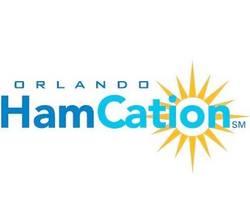 Hamvention®, which attracts some 25,000 visitors each May. This year, HamCation logged a record 19,000 attendees, up by 2,000 from last year and moving it ahead of Ham Radio in Friedrichshafen, Germany.
Hamvention®, which attracts some 25,000 visitors each May. This year, HamCation logged a record 19,000 attendees, up by 2,000 from last year and moving it ahead of Ham Radio in Friedrichshafen, Germany.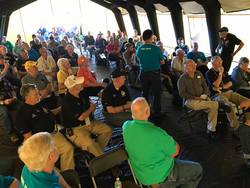
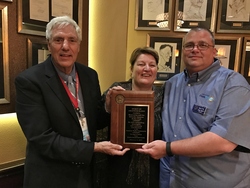
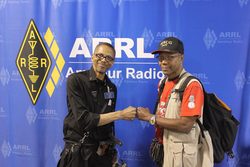
.jpg)
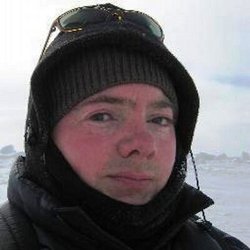
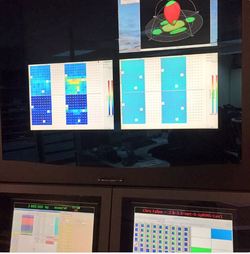
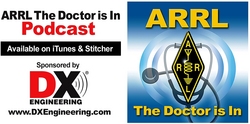 Sponsored by
Sponsored by 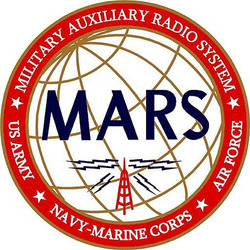 "Probably the most significant changes were the Navy's decision to 'sunset' the Navy Marine Corps MARS program and our move to refocus Army and Air Force MARS on providing contingency HF Radio communications support to the DOD and the services," English said. "In order to focus our support on the Department of Defense, MARS leadership had to rethink, essentially from the ground up, what it means to be a MARS member." MARS relies on volunteers from within the Amateur Radio ranks. Among other things, recruits receive specialized training in military messaging formats and digital messaging protocols.
"Probably the most significant changes were the Navy's decision to 'sunset' the Navy Marine Corps MARS program and our move to refocus Army and Air Force MARS on providing contingency HF Radio communications support to the DOD and the services," English said. "In order to focus our support on the Department of Defense, MARS leadership had to rethink, essentially from the ground up, what it means to be a MARS member." MARS relies on volunteers from within the Amateur Radio ranks. Among other things, recruits receive specialized training in military messaging formats and digital messaging protocols.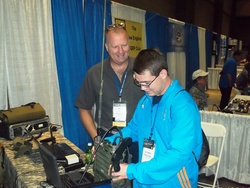
 In Arizona, Rick Paquette, W7RAP, of Tucson, topped the field in a three-way race, receiving 638 votes to 375 for Steven Wood, W1SR, of Tucson, and 353 for Virgil Silhanek, K7VZ, of Phoenix. Paquette has served as an Assistant Section Manager and has been a volunteer instructor, mentor, and volunteer examiner for many years. Robert Spencer, KE8DM, of Yuma, who has served as SM since 2013, decided not to run for another term.
In Arizona, Rick Paquette, W7RAP, of Tucson, topped the field in a three-way race, receiving 638 votes to 375 for Steven Wood, W1SR, of Tucson, and 353 for Virgil Silhanek, K7VZ, of Phoenix. Paquette has served as an Assistant Section Manager and has been a volunteer instructor, mentor, and volunteer examiner for many years. Robert Spencer, KE8DM, of Yuma, who has served as SM since 2013, decided not to run for another term.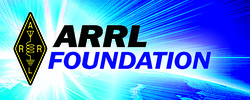 The Thompsons, who married in 1939, were both from eastern Polk County, Florida. Homer Thompson's family was among the pioneers of the citrus industry in the Haines City area, while Annette Thompson's grandfather, Ephriam Baynard, was a notable early real estate developer in Auburndale. A graduate of the University of Florida, Homer Thompson saw service during World War II and the Korean Conflict. Upon retiring from military service as a lieutenant colonel, Thompson was awarded the Legion of Merit for his service with the Army Security Agency. He was employed by the FCC for 30 years. The Thompsons also oversaw citrus grove properties they owned jointly.
The Thompsons, who married in 1939, were both from eastern Polk County, Florida. Homer Thompson's family was among the pioneers of the citrus industry in the Haines City area, while Annette Thompson's grandfather, Ephriam Baynard, was a notable early real estate developer in Auburndale. A graduate of the University of Florida, Homer Thompson saw service during World War II and the Korean Conflict. Upon retiring from military service as a lieutenant colonel, Thompson was awarded the Legion of Merit for his service with the Army Security Agency. He was employed by the FCC for 30 years. The Thompsons also oversaw citrus grove properties they owned jointly.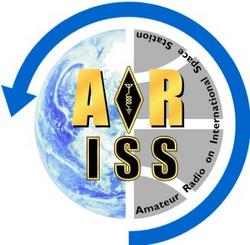 To maximize these radio contact opportunities, ARISS seeks proposals from schools and organizations that can draw large numbers of participants and integrate the contact into a well-developed education plan. Each FM-voice contact lasts about 10 minutes -- the length of a typical overhead ISS pass from horizon to horizon.
To maximize these radio contact opportunities, ARISS seeks proposals from schools and organizations that can draw large numbers of participants and integrate the contact into a well-developed education plan. Each FM-voice contact lasts about 10 minutes -- the length of a typical overhead ISS pass from horizon to horizon.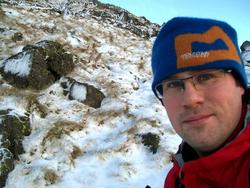 Summits on the Air Activation the Hard Way: A radio amateur in the UK, Colin Evans, M1BUU, attained Summits on the Air (
Summits on the Air Activation the Hard Way: A radio amateur in the UK, Colin Evans, M1BUU, attained Summits on the Air (.JPG)
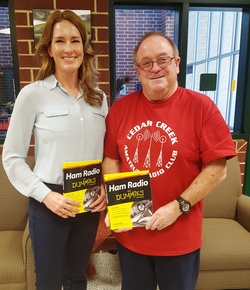
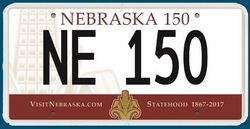 Nebraska Sesquicentennial Celebration QSO Party Set: Radio amateurs in Nebraska will celebrate the state's 150th anniversary during the
Nebraska Sesquicentennial Celebration QSO Party Set: Radio amateurs in Nebraska will celebrate the state's 150th anniversary during the 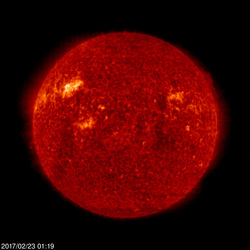 Spaceweather.com
Spaceweather.com








